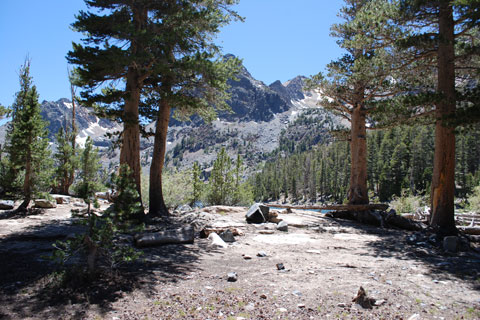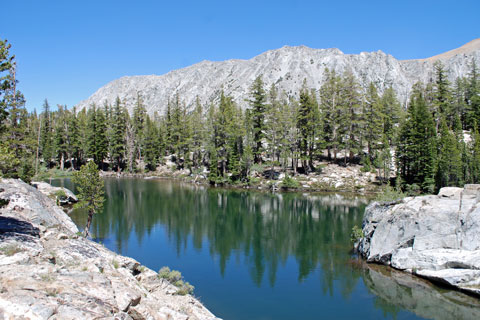Pitch Your Tent at East Lake
Comfortable, forested campsites are found at the north end of the lake on either side of the outlet creek. Campers will find plenty of space to spread out. Some respectable campsites can also be located along the creek a short distance below the outlet of the lake.
Shop Amazon for:
Backpacking Tents
Those with some spring left in their legs may want to continue along the trail to a peninsula near Nutter Lake on the south end of East Lake. Some other sites are located there.

East Lake Campsite
Fishing at East Lake
East Lake is a popular place to fish for brook and rainbow trout. Fishing with lurtes, anglers have an excellent chance of landing some good-size fish. Neighboring Nutter Lake has some large rainbows waiting for someone to drop the right fly on the surface, maybe an ant. Other good fly choices are Olive Caddis, Parachute Adams and Black Gnat.

